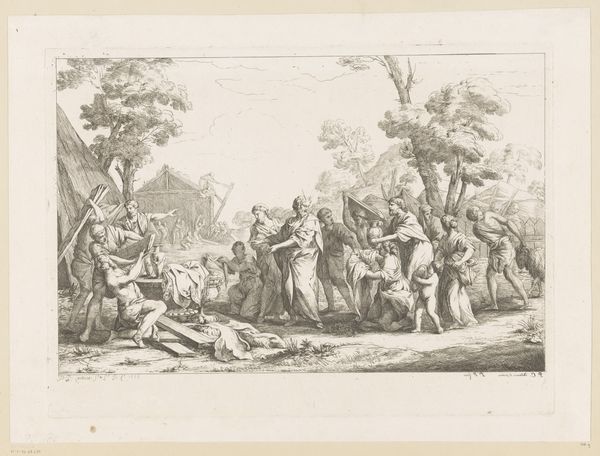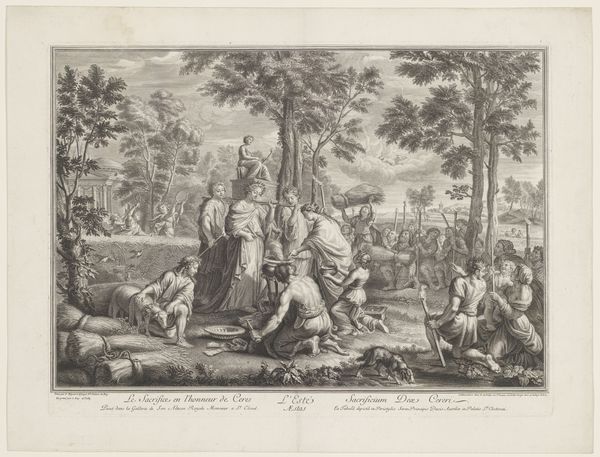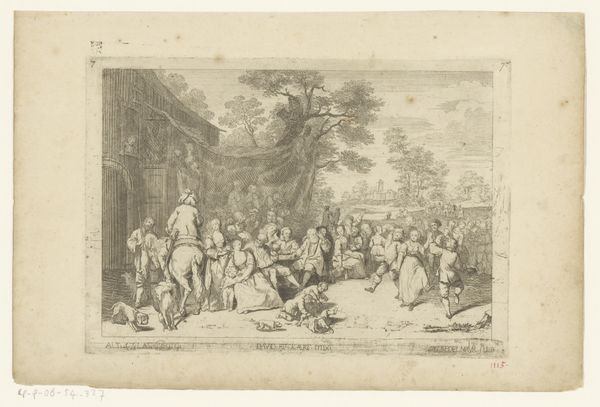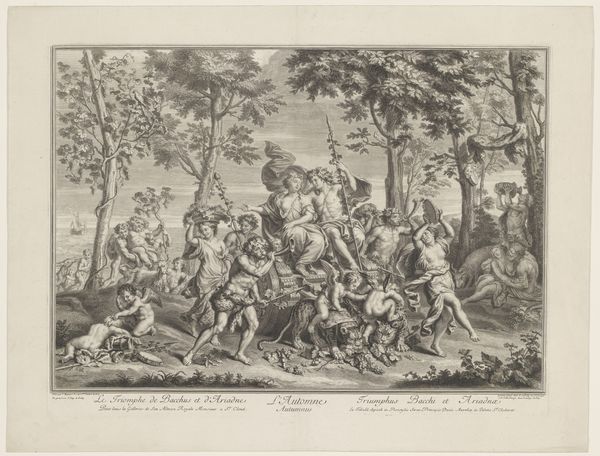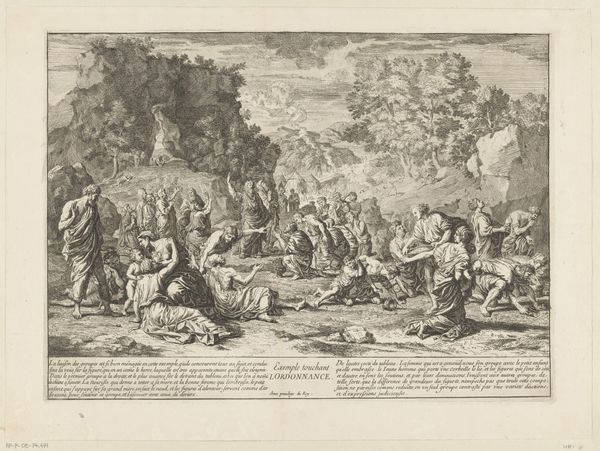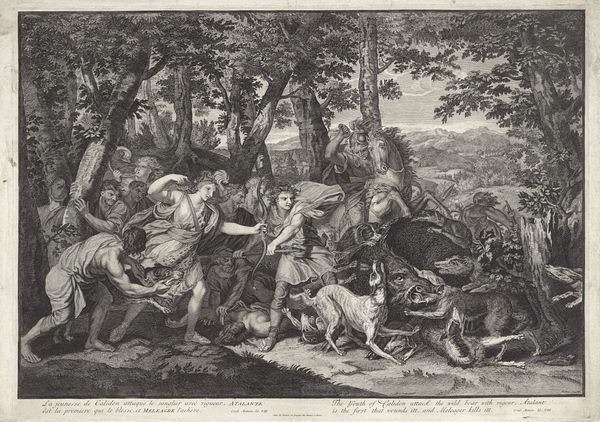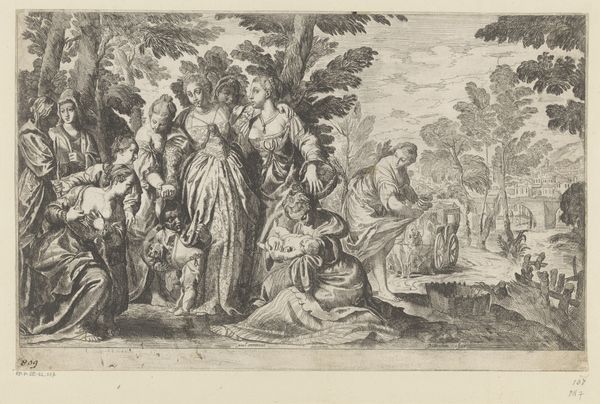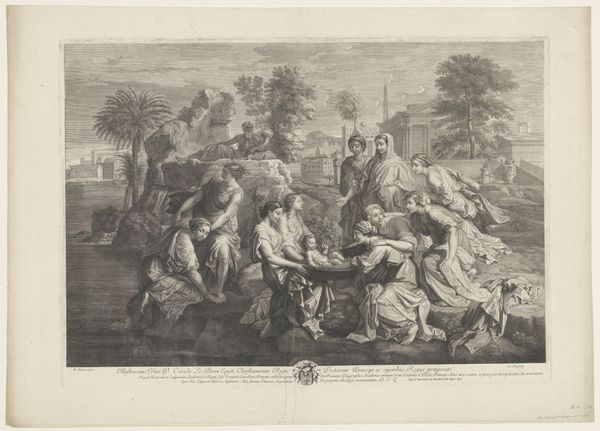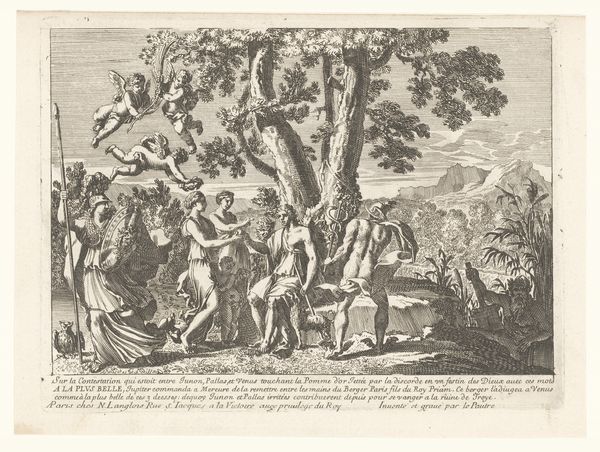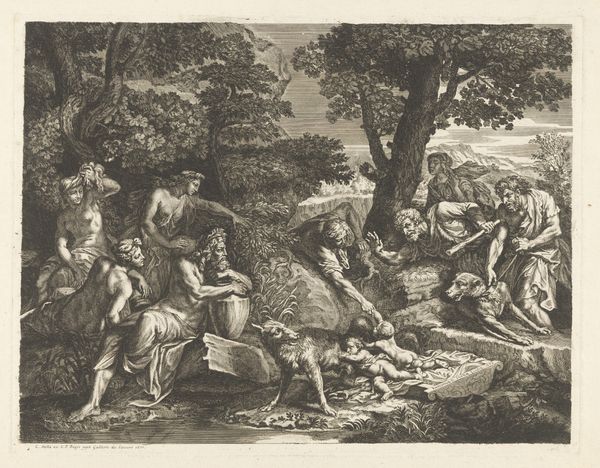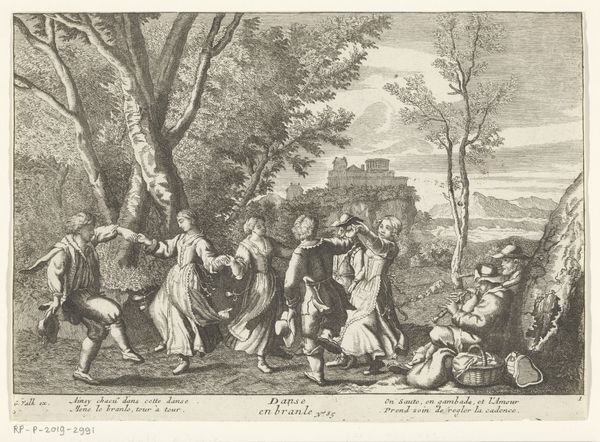
print, engraving
#
narrative-art
#
baroque
# print
#
landscape
#
figuration
#
genre-painting
#
history-painting
#
engraving
Dimensions: height 165 mm, width 228 mm
Copyright: Rijks Museum: Open Domain
Curator: This engraving, currently held at the Rijksmuseum, is entitled "Atalanta en Hippomenes". It’s attributed to Magdalena van de Passe, and was created sometime between 1636 and 1670. Editor: My first impression? It’s dynamic. Despite being a static image, I get a real sense of movement, of figures in frantic motion against a placid landscape. Curator: Absolutely. Van de Passe has captured a key moment from Ovid’s "Metamorphoses". We see the race between Atalanta, the swift-footed huntress, and Hippomenes, who is using golden apples to distract her. This subject matter, pulled from classical mythology, offered artists like van de Passe avenues to subtly engage with social norms and courtly expectations of her era. Editor: See how the composition guides our eye. The trees in the background almost form a visual frame around the central figures. There is a remarkable contrast to the crisp details rendered in the foreground characters against the fuzzier rendition of figures pushed further back in the scene, thereby producing layers and spatial recession, drawing you into the narrative core. Curator: Note how this narrative would have resonated particularly strongly during the Baroque period. Scenes featuring powerful women and tales laden with moral lessons were common ways to reinforce or question established power structures. Think about the concept of courtly love or, conversely, of subversion. By immortalizing this ancient narrative, the artist allows contemporary audiences an entryway into complex issues related to the position of women in Dutch society and the world at large. Editor: Right, but look at how she does this purely through the artifice of line and shadow! The muscular definition in Hippomenes's legs, the billowing fabric of Atalanta's dress, all rendered with such crisp precision given the limitation of an engraving, contribute to that dynamic sensation of pursuit, the contest of bodies as visual motif for this classical subject. Curator: Furthermore, it's intriguing to think of prints like these functioning as accessible vehicles for education and cultural transmission. Without wide access to the classics, visual imagery such as this allows people from all classes insight into Greek and Roman classics, molding individual and shared concepts about morality, politics, and history. Editor: Indeed, and her facility for it here results in a picture that invites deep exploration from any angle. Curator: From the context of gender studies, the role of myth, or pure formal artistry. This "Atalanta en Hippomenes" truly offers rich material for interpretation. Editor: Van de Passe’s rendering invites us to observe how she crafts a rich narrative, proving beauty often lies in its structural foundations.
Comments
No comments
Be the first to comment and join the conversation on the ultimate creative platform.
